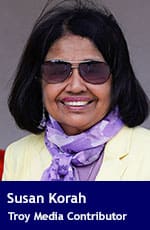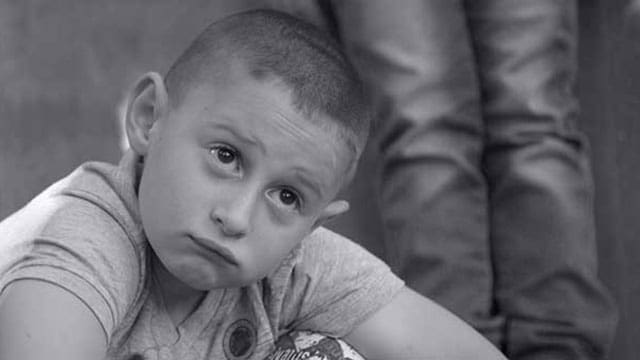The heartbreaking story of Artsakh Armenians is one of loss and survival
 As spring flowers burst into bloom on the mountain slopes and in the valleys of Nagorno Karabakh, there are almost no Armenians there to celebrate the arrival of spring in their ancient homeland, a territory within Azerbaijan’s borders, separated from Armenia by a six-km mountain highway, the Lachin Corridor.
As spring flowers burst into bloom on the mountain slopes and in the valleys of Nagorno Karabakh, there are almost no Armenians there to celebrate the arrival of spring in their ancient homeland, a territory within Azerbaijan’s borders, separated from Armenia by a six-km mountain highway, the Lachin Corridor.
For the first time in 1,700 years, church bells no longer echo across the streets of Stepanakert, the capital, or Shusha, the cultural capital of this enclave that Armenians call Artsakh.
The blessing of pomegranates is an important ritual conducted every New Year’s Eve in the Etchmiadzin Cathedral, the holiest shrine of the Armenian Apostolic Church, because to Armenian Christians the ruby-red fruit symbolizes the blood of Christ. In the past, the government of Artsakh has sent pomegranates for the occasion to the Mother Church in Etchmiadzin, the Vatican of Armenia, located in Armenia.
But New Year’s Eve 2024 was a day of searing sadness for Artsakh Armenians. On Jan. 1, Artsakh was formally abolished and ceased to exist as a political entity.
 Photo by Naira Babayan |
| Related Stories |
| Armenian refugees face a bitter winter and a threat to their Christian heritage
|
| Fear of erasure fuels Artsakh exodus
|
| Artsakh burns while Western leaders fiddle
|
The 100,000 Armenians who fled their homeland in terror last year after a nine-month blockade followed by a sudden military assault by Azerbaijan are left to rebuild their lives in Armenia. Living in makeshift shelters or temporary, overcrowded homes, they are no longer the subject of media headlines. They are dependent, for the most part, on aid organizations such as Caritas Armenia for their daily bread.
Srbuhi Hayrapetyan is one such refugee. Her story is related by Armenuhi Mkoyan, communications manager for Caritas Armenia.
“The memories of their harrowing escape from Martakert with her child driving their car still haunt Srbuhi,” Mkoyan told me. ”The scars of war, both physical and emotional, remind her of the price they paid for their survival.”
In Martakert, their life was one of contentment and peace, although fears of Azerbaijan’s attacks constantly loomed, she said. Hayrapetyan’s husband was a contract soldier, and the family tended to its cattle and bees, finding solace in the echoes of history. But on that fateful day of the Azeri attack – Sept. 19, 2023 – they lost everything.
“Now displaced and far from their roots, Srbuhi longs for a return to Artsakh, but only if it’s free from the presence of Azerbaijan,” Mkoyan said. “For her, the struggle is not just about reclaiming their land, but preserving Armenian identity and heritage against the forces of erasure and destruction.”
Organizations like Caritas Armenia that strive to alleviate their suffering are a source of solace to displaced Artsakh Armenians, she said.
“Caritas Armenia is doing everything possible to ease their burdens through our new programs,” Mkoyan continued. “Thanks to the substantial support by the partner organizations including Caritas Canada, we have provided a number of households with food, accommodation and cash grants and vouchers, livelihood support and psychological assistance. We hope to reach 3,700 households.”
Mkoyan pointed out, however, that organizations like Caritas can only do so much, given that the need is enormous.
“No matter how much we, and other organizations and the government (of Armenia) try to support these families, the need is overwhelming. If people would like to donate to Caritas Armenia, we would be deeply grateful. We can help more people with clothes, shelter and other essential needs because most arrived with nothing but the clothes they were wearing.”
Rupen Janbazian is a Canadian Armenian from Toronto who relocated to Yerevan during the 2020 war between Armenia and Azerbaijan which displaced 90,000 Artsakh Armenians.
“I have close connections with several refugee families from Artsakh, including friends, former colleagues and even my goddaughter,” said Janbazian. “These personal ties give me a direct perspective on the challenges they face. Many of them are dealing with the trauma of displacement, but they continue to adapt and find ways to rebuild their lives in Armenia. The uncertainty of their future weighs heavily on them, especially since the possibility of returning to Artsakh seems increasingly remote given Azerbaijan’s aggressive actions. Despite these hardships, they press on to support their families and create a sense of stability in their new surroundings.”
Like Mkoyan, Janbazian is acutely aware of the enormous need in proportion to available resources.
“The EU, USAID, Canada, and other (governments) have provided funding, but it’s insufficient to manage the crisis,” he said. “Canada pledged $2.5 million in humanitarian aid, which, though helpful, is a small fraction of what’s needed. This funding aims to provide emergency health services, food and protection services. However, it’s unclear how long this aid will last or what other support might be forthcoming.”
He added that private Armenian citizens are picking up some of the slack.
“Most refugees find shelter in apartments, but many are overcrowded due to rising rental costs,” he said. “Multiple families often share a single apartment. Private citizens are also providing shelter; many have opened their homes to relatives or friends who have fled Artsakh. Some even offer free housing, like our family, who, since September of last year, have provided our summer home just outside Yerevan to a displaced family.”
Janbazian, editor-in-chief of the Armenian newspaper Torontohye, has been keeping track of Azerbaijan’s policy of eliminating all traces of Artsakh’s Christian history and heritage. Drones have captured the horror of wrecking crews continuing to pulverize churches, monasteries and cemeteries.
“Azerbaijan’s policy includes the desecration of significant Armenian sites like the Holy Mother of God Cathedral in Stepanakert, the destruction of buildings such as the Artsakh Parliament and the removal of Armenian monuments and statues,” he said.
Asked why the Armenian crisis gets so little media coverage, Janbazian responded: “The Armenian conflict often goes under the radar in international news due to the lack of strategic interest for many countries. The Armenian Genocide Memorial Day on Apr. 24 might bring some attention, but the broader international community often overlooks conflicts like this unless they have direct national or strategic implications.”
A few independent journalists, however, are working to raise awareness of the forgotten crisis and have been unrelenting in their efforts, including Nuri Kino, a Swedish journalist and leader of the NGO A Demand for Action.
“I was in an Armenia-Azerbaijan border town helping refugees as bombs rained on children in Artsakh,” he said. “I will never forget Gor Khachatrian, the 13-year-old boy who drove seven family members and friends all the way from Artsakh to Armenia while his father was away fighting.
“Armenia is still under siege and we at ADFA will continue to raise awareness in the international media and advocate for them in parliaments around the world to stop the ongoing destruction.”
Jackie Abramian, another independent journalist, is producing a documentary series with Bared Maronian, a multi-Emmy award-winning filmmaker. One episode is called Genocide 2.0: Artsakh Ethnic Cleansing.
“The central focus of the episode is the forced displacement of over 100,000 Artsakhians who now live in Armenia, facing the prospect of never returning to their homeland,” she said.
Susan Korah is Ottawa correspondent for The Catholic Register, a Troy Media Editorial Content Provider Partner.
For interview requests, click here.
The opinions expressed by our columnists and contributors are theirs alone and do not inherently or expressly reflect the views of our publication.
© Troy Media
Troy Media is an editorial content provider to media outlets and its own hosted community news outlets across Canada.

